The Role of VR in Enhancing Precision in Combat Operations
In recent years, virtual reality (VR) has emerged as a revolutionary tool in the realm of military operations. It’s not just about gaming anymore; VR is transforming how we train soldiers and execute combat strategies. Imagine being able to step into a virtual battlefield where every sound, movement, and environment feels incredibly real. This immersive experience allows soldiers to hone their skills in a way that traditional training methods simply cannot match. With VR, the military can simulate complex scenarios, enabling troops to practice and prepare for various situations they might encounter in the field.
One of the most significant advantages of VR in combat operations is its ability to enhance precision. In the heat of battle, decisions need to be made quickly, and mistakes can have dire consequences. By using VR, soldiers can engage in realistic training exercises that mimic battlefield conditions, allowing them to develop a keen sense of situational awareness. They learn to assess threats, navigate obstacles, and respond to unexpected challenges—all within a safe and controlled environment. This kind of training not only builds confidence but also equips soldiers with the tools they need to make split-second decisions with accuracy.
Furthermore, VR technology allows for the creation of highly realistic scenarios. These simulations can replicate various environments, from urban settings to rugged terrains, and even include different weather conditions. This variety ensures that soldiers are not only prepared for what they might face but also adaptable to changing circumstances. For example, a soldier might train in a virtual cityscape one day and then switch to a mountainous region the next, all while developing the necessary skills to handle each unique situation effectively.
Another remarkable feature of VR training is the immediate feedback it provides. After each training session, soldiers can receive performance assessments that highlight their strengths and areas for improvement. This instant feedback loop is invaluable as it allows for continuous learning and adaptation. Instead of waiting for a formal evaluation, soldiers can adjust their techniques and strategies on the fly, which significantly enhances their readiness for actual combat scenarios.
Moreover, the integration of VR with other advanced technologies, such as artificial intelligence (AI) and drones, can further elevate operational precision. For instance, AI can analyze a soldier's performance in VR training and suggest tailored improvements, while drones can be used to simulate aerial threats. This synergistic approach not only enhances training but also prepares soldiers for coordinated operations that involve multiple technologies working in harmony.
As we look to the future, the potential for VR in military operations is vast. With ongoing advancements aimed at improving realism, accessibility, and overall effectiveness, we can expect VR to play an even more critical role in shaping the next generation of combat training and operations. The military is just beginning to scratch the surface of what is possible with this technology, and as it evolves, so too will the capabilities of our armed forces.
- What is virtual reality in military training?
Virtual reality (VR) in military training refers to the use of immersive simulations that replicate real-world combat scenarios, allowing soldiers to practice their skills in a controlled environment.
- How does VR improve situational awareness?
VR enhances situational awareness by immersing soldiers in realistic environments where they can practice assessing threats and making quick decisions under pressure.
- What are the challenges of implementing VR in military operations?
Challenges include high costs, the need for specialized training, and potential technical issues that may arise during the implementation process.
- What is the future of VR in military operations?
The future of VR in military operations looks promising, with ongoing developments aimed at enhancing realism and effectiveness in training and combat scenarios.

Introduction to VR in Combat
This article explores how virtual reality (VR) technology is transforming combat operations, improving precision, training, and decision-making in military scenarios.
Virtual reality has emerged as a groundbreaking tool in military training and operations, offering immersive environments that enhance soldiers' skills and situational awareness in combat scenarios. Imagine stepping into a world where you can face the chaos of battle without the real-world consequences—this is the magic of VR. It allows soldiers to experience realistic combat situations, from urban warfare to tactical maneuvers, all from the safety of a controlled environment.
In the past, military training relied heavily on physical drills and live exercises, which, while effective, posed significant risks and logistical challenges. With VR, the game has changed. Soldiers can engage in dynamic simulations that replicate the unpredictability of real-life combat. This technology not only prepares them for the battlefield but also keeps them safe during the training process. The ability to repeat scenarios without injury or loss of resources is invaluable.
Moreover, VR training programs can be tailored to meet the specific needs of different military units. For instance, a special forces team might focus on stealth and reconnaissance, while an infantry unit could practice coordinated assaults. This level of customization ensures that every soldier receives the training they need to excel in their roles.
As VR continues to evolve, the potential for enhancing military operations is vast. The technology is not just about creating a virtual battlefield; it's about transforming how soldiers learn and adapt to the complexities of modern warfare. By immersing troops in lifelike scenarios, VR fosters a deeper understanding of tactics and strategies that can be crucial in high-stakes situations.
VR training provides a safe and controlled environment for soldiers to practice critical skills, allowing for repeated exposure to various combat situations without the risks associated with live training exercises.
Through VR simulations, soldiers can develop a better understanding of their surroundings, improving their ability to assess threats and make informed decisions in high-pressure situations.
VR technology enables the creation of highly realistic combat scenarios, helping soldiers prepare for a wide range of situations they may encounter in the field.
Immediate feedback and performance assessment in VR training allow soldiers to identify areas for improvement, enhancing their readiness for actual combat.
The integration of VR with other advanced technologies, such as AI and drones, can further enhance operational precision and effectiveness during combat missions.
Despite its advantages, implementing VR technology in military operations faces challenges, including high costs, the need for specialized training, and potential technical issues.
The initial investment in VR technology can be substantial, raising concerns about budget allocation within military organizations.
Effective use of VR requires soldiers to undergo specific training, which can be time-consuming and may divert resources from other essential training programs.
As technology continues to advance, the future of VR in military operations looks promising, with ongoing developments aimed at improving realism, accessibility, and effectiveness in training and combat scenarios.
- How does VR training differ from traditional training methods?
VR training provides a safe, controlled environment that allows soldiers to practice repeatedly without the risks associated with live exercises. - What are the main benefits of using VR in military operations?
Benefits include enhanced situational awareness, realistic scenario training, and immediate feedback for performance improvement. - Are there any downsides to implementing VR technology in the military?
Challenges include high costs, the need for specialized training, and potential technical issues that may arise during simulations.
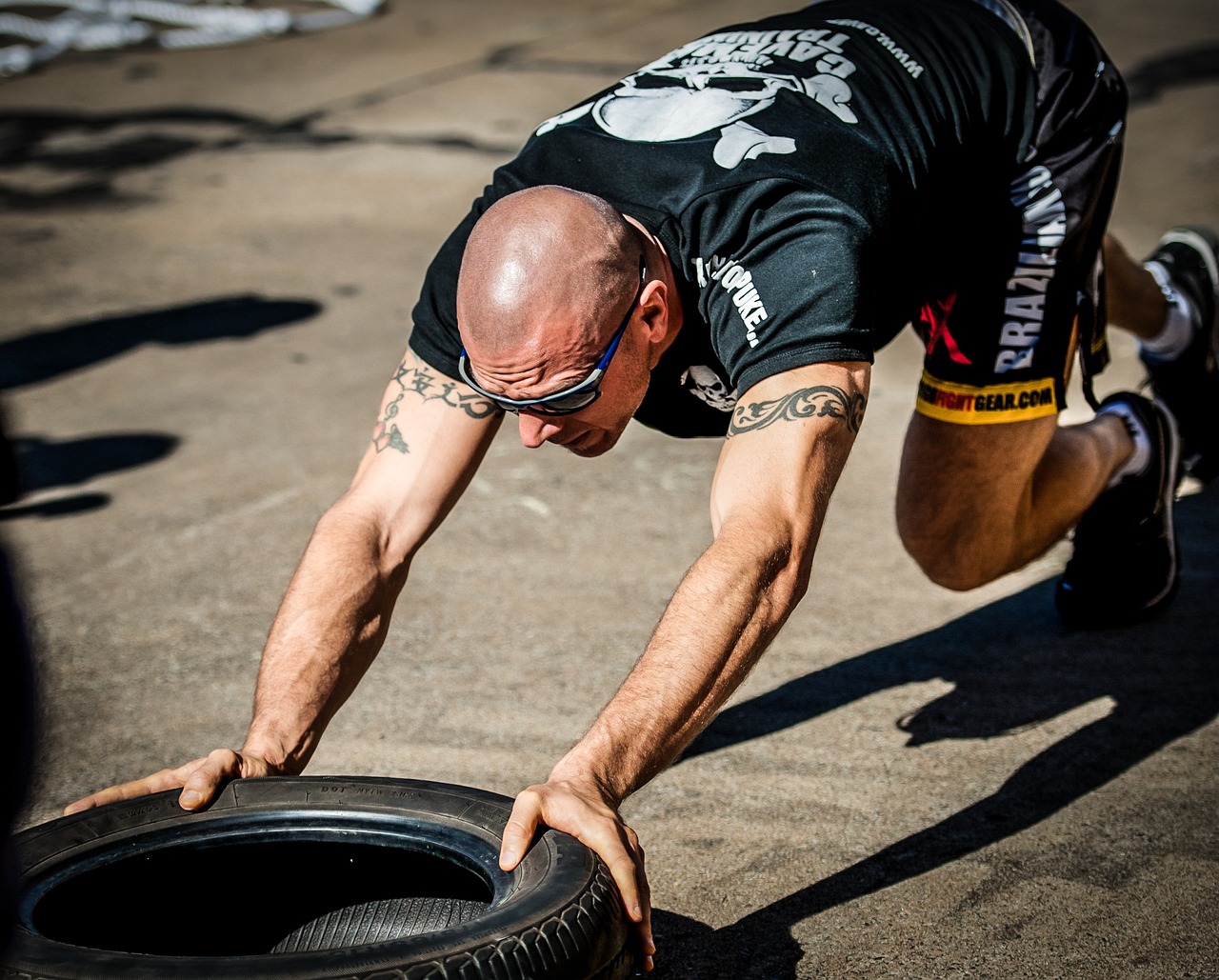
Benefits of VR Training
Virtual reality (VR) training is revolutionizing how military personnel prepare for combat. Imagine stepping into a world where you can face the chaos of battle without the physical dangers that come with it. This immersive technology provides a safe and controlled environment for soldiers to hone their skills, making training not only effective but also engaging. The ability to simulate various combat scenarios allows soldiers to experience situations they might never encounter in traditional training, ensuring they are well-prepared for the unexpected.
One of the most significant advantages of VR training is the enhanced situational awareness it fosters. Through realistic simulations, soldiers can develop a profound understanding of their surroundings. They learn to assess threats quickly and make informed decisions under pressure, which is crucial in real combat situations. For example, a soldier can practice navigating complex urban environments, identifying potential ambush points, and responding to enemy movements—all without the risk of injury.
Moreover, VR technology enables the creation of highly realistic combat scenarios. These scenarios can be tailored to reflect specific missions or environments, allowing soldiers to train in conditions that closely mirror what they will face in the field. Whether it's a desert landscape or an urban setting, VR can replicate the challenges of each environment, giving soldiers a taste of what to expect. This level of realism not only boosts confidence but also improves decision-making skills when it counts.
Another key benefit is the immediate feedback and assessment provided during VR training sessions. Unlike traditional training methods, where feedback can be delayed, VR allows for real-time evaluation of a soldier's performance. Instructors can monitor actions and provide instant critiques, helping soldiers identify areas for improvement. This immediate feedback loop is invaluable for skill development, as it encourages rapid learning and adaptation.
Furthermore, VR training can be conducted repeatedly, allowing soldiers to practice critical skills until they are second nature. This repetitive exposure helps to solidify knowledge and muscle memory, which is essential for high-stakes environments. By removing the physical risks associated with live training exercises, soldiers can focus entirely on mastering their skills without the looming fear of failure or injury.
In summary, the benefits of VR training extend far beyond mere convenience. It enhances situational awareness, creates realistic scenarios, provides immediate feedback, and allows for repeated practice—all of which contribute to a more effective and prepared military force. As technology continues to evolve, the potential for VR in military training will only grow, paving the way for a new era of combat readiness.
- What is VR training? VR training uses virtual reality technology to create immersive simulations for military personnel to practice and enhance their skills.
- How does VR improve situational awareness? VR allows soldiers to experience realistic combat scenarios, helping them understand their environment and assess threats more effectively.
- Is VR training safe? Yes, VR training provides a safe environment for soldiers to practice without the risks associated with live training exercises.
- Can VR training be customized for specific missions? Absolutely! VR technology can create tailored scenarios that reflect the unique challenges of different missions or environments.
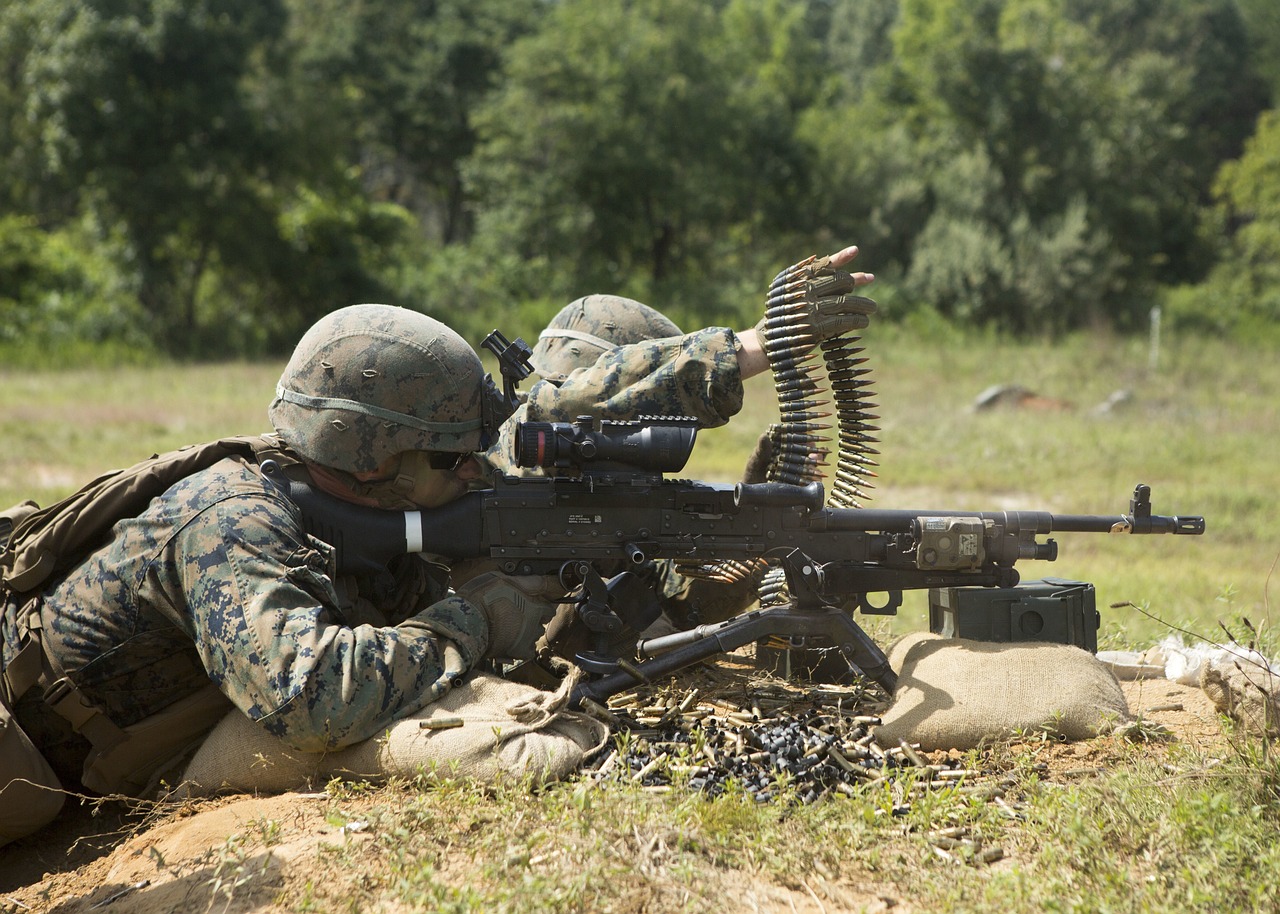
Enhanced Situational Awareness
In the heat of battle, the ability to maintain situational awareness can be the difference between life and death. Virtual reality (VR) technology takes this concept and elevates it to a whole new level. By immersing soldiers in a 360-degree environment that mimics real combat scenarios, VR allows them to develop a keen understanding of their surroundings. Imagine stepping into a virtual battlefield where every sound, movement, and visual cue is designed to replicate the chaos of war. This immersive experience not only enhances a soldier's ability to identify threats but also sharpens their decision-making skills under pressure.
One of the most significant advantages of VR in enhancing situational awareness is the opportunity for repeated exposure to various combat situations. Soldiers can engage in multiple scenarios, from urban warfare to open-field engagements, without the inherent risks associated with live training exercises. This repeated exposure helps soldiers to:
- Recognize patterns in enemy behavior.
- Understand the terrain and its impact on combat strategies.
- React swiftly to unexpected developments in a controlled environment.
Furthermore, VR training offers a unique chance to practice team coordination. In a combat situation, the ability to work seamlessly with fellow soldiers is crucial. Through VR simulations, teams can practice communication and tactical maneuvers, ensuring that each member understands their role and responsibilities. This collaborative aspect not only boosts individual confidence but also fosters a sense of camaraderie among team members, which is vital in high-stress environments.
Moreover, the technology provides real-time data analytics that can be used to assess a soldier's performance. After each simulation, soldiers receive immediate feedback on their actions, allowing them to pinpoint areas for improvement. This continuous loop of practice and assessment leads to a profound enhancement in situational awareness, making soldiers more adept at navigating complex combat scenarios. The integration of VR technology in military training is not just a trend; it's a revolutionary step towards creating highly skilled and aware combat personnel.
- What is situational awareness in combat?
Situational awareness refers to the ability to perceive, comprehend, and anticipate events in a combat environment. It involves being aware of one’s surroundings, understanding the dynamics of the battlefield, and making informed decisions quickly. - How does VR improve situational awareness?
VR enhances situational awareness by immersing soldiers in realistic combat scenarios where they can practice identifying threats, reacting to changes in their environment, and coordinating with team members without the risks of live training. - What types of scenarios can be simulated using VR?
VR can simulate a wide range of combat situations, including urban warfare, desert operations, and even humanitarian missions, allowing soldiers to prepare for various challenges they might face in real-world operations.
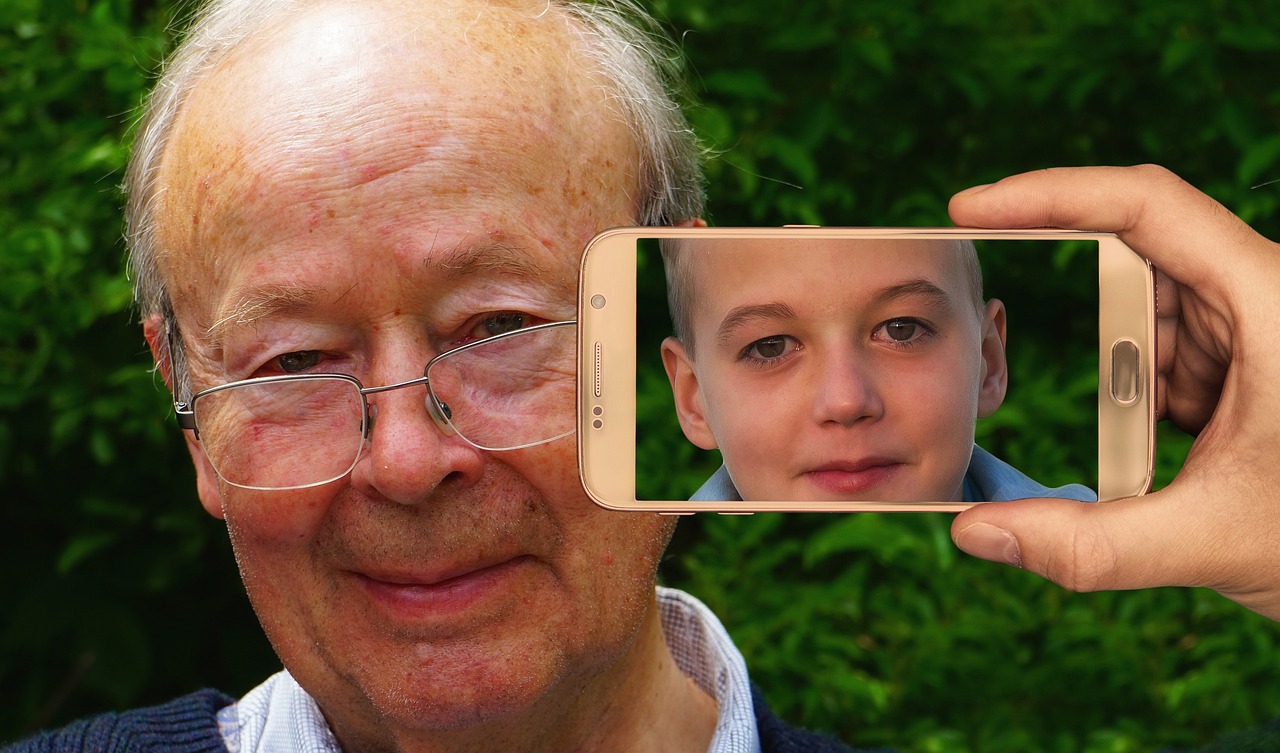
Realistic Scenarios
When it comes to training soldiers, nothing beats the power of realism. Virtual reality (VR) technology has revolutionized the way military personnel prepare for combat by immersing them in hyper-realistic scenarios. Imagine stepping into a digital battlefield where every sound, sight, and sensation mimics real-life conditions. This immersive experience not only prepares soldiers for the chaos of war but also conditions their minds to react instinctively and effectively in high-stress situations.
One of the most remarkable aspects of VR is its ability to simulate a variety of environments and combat situations, ranging from urban warfare to open-field engagements. This versatility means that soldiers can train for almost any scenario they might face in the field. For instance, a soldier could find themselves in a virtual cityscape, navigating through narrow alleyways while under simulated fire, or in a dense forest, where stealth and strategy are paramount. The possibilities are endless!
Moreover, these scenarios can be tailored to reflect current geopolitical situations, ensuring that soldiers are not only training for generic combat but are also prepared for specific missions they may encounter. This adaptability is crucial in a world where threats are constantly evolving. By using VR, military trainers can create customized training modules that reflect the latest intelligence and operational needs.
Additionally, VR allows for the incorporation of multiple variables within these scenarios. For example, soldiers can face different enemy tactics, weather conditions, and even civilian interactions, all of which add layers of complexity to their training. This multifaceted approach helps soldiers develop critical thinking and problem-solving skills, making them more effective on the battlefield.
To illustrate the effectiveness of VR training, consider the following table that compares traditional training methods with VR training:
| Aspect | Traditional Training | VR Training |
|---|---|---|
| Realism | Limited by physical environments | Highly immersive and adaptable |
| Safety | Risk of injury | Safe environment for practice |
| Cost | High due to logistics and equipment | Lower long-term costs with scalability |
| Feedback | Delayed and often subjective | Instantaneous and data-driven |
In conclusion, the use of realistic scenarios in VR training not only enhances the soldiers' preparedness but also fosters a culture of continuous learning and adaptability. As technology continues to advance, we can expect even more sophisticated simulations that further bridge the gap between training and real-world combat. Imagine a future where soldiers can train in scenarios that are indistinguishable from reality, ensuring they are always ready for whatever challenges lie ahead.
- What are the main advantages of VR training for soldiers? VR training offers a safe and controlled environment, realistic scenarios, immediate feedback, and the ability to practice a wide range of combat situations without the risks associated with live training.
- How does VR technology improve decision-making in combat? By immersing soldiers in realistic scenarios, VR enhances their situational awareness, allowing them to assess threats and make informed decisions under pressure.
- What challenges does the military face in implementing VR training? Challenges include high initial costs, the need for specialized training, and potential technical issues that could arise during sessions.
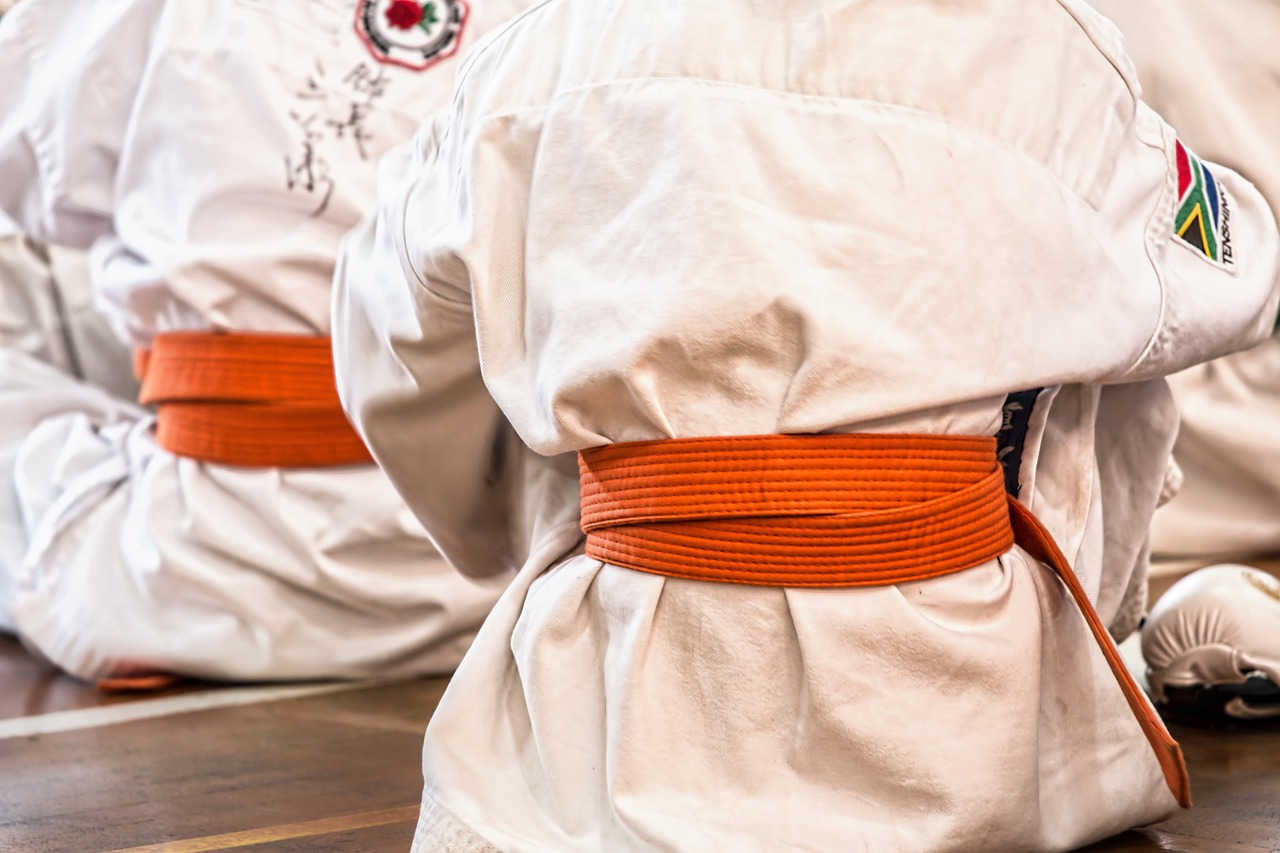
Feedback and Assessment
One of the most significant advantages of utilizing virtual reality (VR) in military training is the ability to provide immediate feedback and comprehensive performance assessments. Imagine stepping into a highly immersive simulation where every action you take is monitored and evaluated in real-time. This type of feedback loop is not just revolutionary; it’s essential for refining the skills of soldiers who face life-or-death situations. In traditional training methods, feedback can often be delayed, leading to missed opportunities for improvement. However, with VR, soldiers can receive instant insights on their performance, allowing them to make quick adjustments and enhance their skills on the fly.
During a VR training session, soldiers might engage in a simulated combat scenario where their decisions and actions are tracked meticulously. For example, if a soldier takes cover behind an object but is still exposed to enemy fire, the system can alert them and provide guidance on better positioning. This kind of real-time assessment not only boosts their confidence but also prepares them for the unpredictable nature of actual combat. The ability to practice repeatedly in a safe environment, coupled with constructive criticism, creates a powerful learning experience that traditional methods simply cannot match.
Furthermore, the data collected during these training sessions can be analyzed to identify patterns and trends in performance. By examining this information, military trainers can tailor future training programs to address specific weaknesses within a unit. For example, if a group of soldiers consistently struggles with communication during high-stress scenarios, trainers can implement focused exercises to improve this critical skill. This data-driven approach ensures that every training session is not just a random exercise but a strategic step toward enhancing overall operational readiness.
In addition to enhancing individual soldier performance, the feedback and assessment capabilities of VR training can also foster a culture of continuous improvement within military units. Soldiers can learn from each other’s experiences, sharing insights and strategies that can lead to better outcomes in future missions. The collaborative aspect of VR training encourages teamwork and camaraderie, which are vital components in any successful military operation.
Ultimately, the feedback and assessment mechanisms integrated into VR training are transforming the way soldiers prepare for combat. By providing immediate, actionable insights and fostering a culture of continuous learning, VR is not just enhancing the skills of individual soldiers; it’s revolutionizing the entire approach to military training.
- How does VR training differ from traditional training methods? VR training offers immersive scenarios that allow soldiers to practice in a safe environment, receiving real-time feedback that traditional methods cannot provide.
- What types of feedback can soldiers expect during VR training? Soldiers receive immediate assessments on their actions, including tactical decisions and situational awareness, allowing for quick adjustments and learning.
- Can VR training be integrated with other technologies? Yes, VR can be combined with AI and other advanced technologies to create even more realistic training environments and improve operational effectiveness.
- What challenges do military organizations face when implementing VR training? The primary challenges include high costs, the need for specialized training, and potential technical issues.
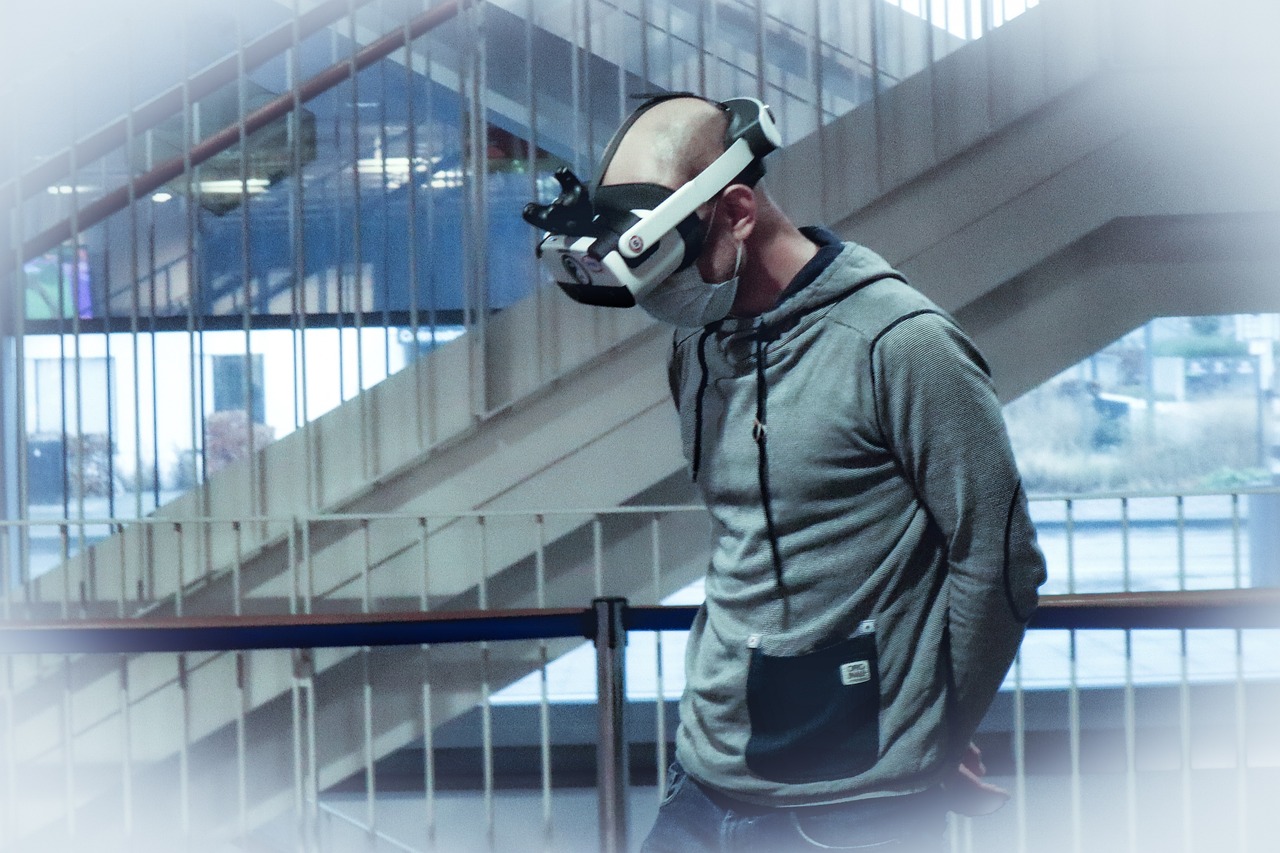
Integration with Other Technologies
In today's rapidly evolving military landscape, the integration of Virtual Reality (VR) with other cutting-edge technologies is revolutionizing combat operations. Imagine a battlefield where soldiers are not only equipped with advanced weaponry but also enhanced by the power of Artificial Intelligence (AI)drones. This fusion creates a synergy that significantly boosts operational precision and effectiveness. For instance, AI can analyze vast amounts of data in real-time, providing soldiers with critical insights that inform their decisions. When these insights are combined with VR simulations, the training becomes even more comprehensive, allowing soldiers to practice decision-making in a safe yet realistic environment.
Furthermore, the use of drones in conjunction with VR technology allows for a more detailed understanding of the battlefield. Drones equipped with cameras can relay live feeds to soldiers undergoing VR training, giving them a real-time perspective of the situation. This not only enhances their situational awareness but also allows them to practice responding to scenarios that are unfolding in real life. The ability to visualize data from multiple sources in a VR environment enables soldiers to strategize better and react more swiftly to threats. As a result, the integration of these technologies leads to a more cohesive and informed combat unit.
However, the integration is not without its challenges. The need for seamless communication between VR systems, AI algorithms, and drone technology requires substantial investment in infrastructure and training. Moreover, ensuring that all technologies work in harmony is crucial; any lag or malfunction could lead to dire consequences on the battlefield. Nevertheless, the potential benefits of this integration are immense, paving the way for more effective training and operational success.
In summary, the collaboration of VR with AI and drone technology is setting a new standard for military operations. As these technologies continue to advance, their combined impact on training and combat scenarios will only grow, leading to a future where soldiers are better prepared and more capable than ever before.
- What is VR training in the military?
VR training in the military involves using virtual simulations to create realistic combat scenarios for soldiers to practice their skills in a safe environment.
- How does AI enhance VR training?
AI can analyze real-time data and provide insights that help soldiers make informed decisions during VR training, making it more effective.
- What are the challenges of implementing VR in military operations?
Challenges include high costs, the need for specialized training, and potential technical issues that may arise.
- Is VR training as effective as live training?
While VR training cannot fully replicate the experience of live training, it offers a safe and controlled environment for soldiers to develop critical skills and situational awareness.
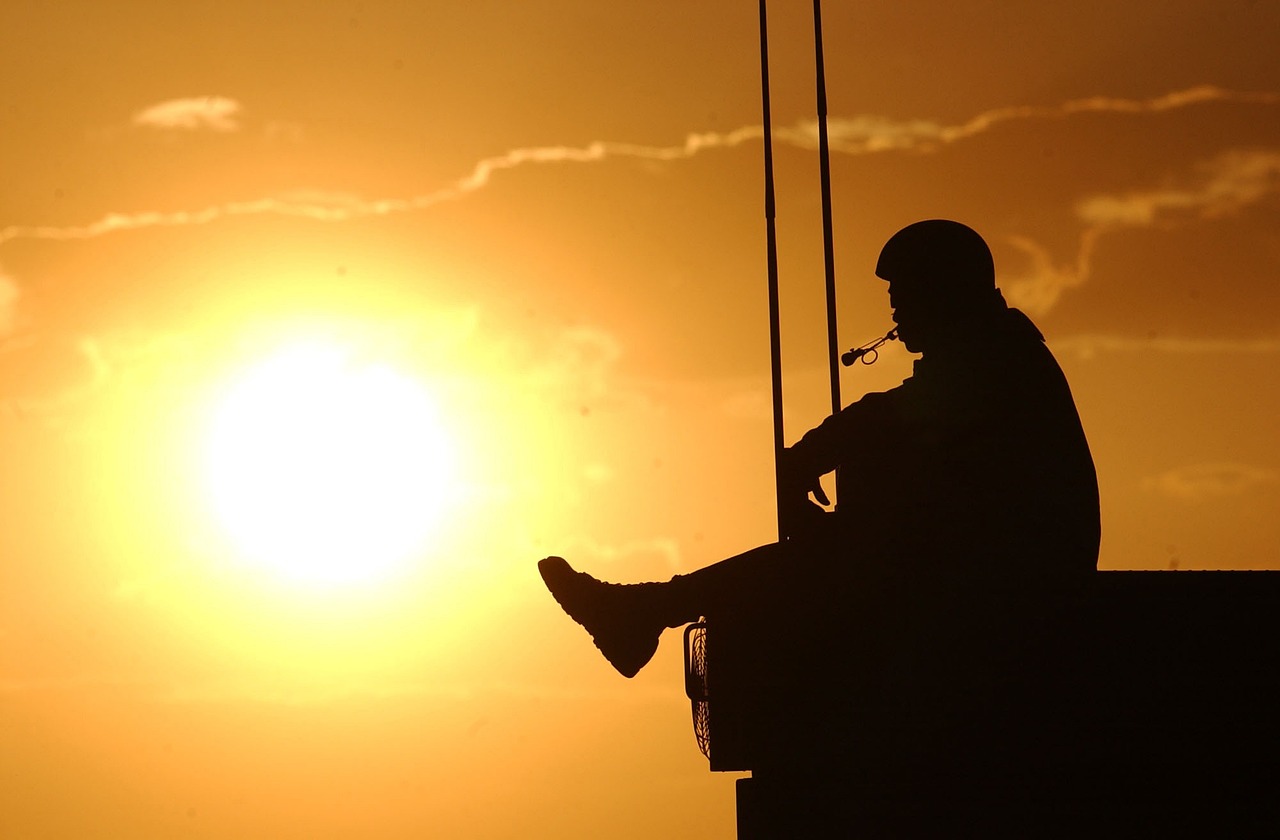
Challenges of VR Implementation
While the advantages of virtual reality (VR) in military operations are compelling, the path to its widespread adoption is not without obstacles. One of the most significant challenges is the cost considerations. Implementing VR technology requires a substantial initial investment. This includes not only the hardware and software but also the ongoing maintenance and updates needed to keep the systems functional and relevant. Military organizations often operate under strict budget constraints, which can make it difficult to allocate funds for such advanced technologies. The financial commitment may lead to tough decisions regarding resource distribution, potentially impacting other essential training programs.
Another critical challenge lies in the training requirements associated with VR technology. While VR provides an immersive training environment, soldiers must undergo specific training to effectively use these systems. This process can be time-consuming and may divert valuable resources from other training initiatives. Imagine trying to teach a soldier to navigate a complex virtual battlefield while also preparing them for real-world scenarios. It's a balancing act that requires careful planning and execution. Moreover, the learning curve associated with new technologies can also lead to frustration among personnel who may not be as tech-savvy.
Technical issues pose yet another hurdle. VR systems are complex and can be prone to glitches and malfunctions. In high-stakes environments like the military, even minor technical issues can lead to significant consequences. Soldiers relying on VR for critical training may find themselves unprepared if the technology fails during a crucial moment. This unpredictability can erode trust in the system and lead to reluctance in adopting VR as a primary training tool.
Furthermore, there is a cultural challenge within military organizations. Traditional training methods have been in place for decades, and shifting to a new paradigm that incorporates VR requires a change in mindset. Some military personnel may be skeptical about the effectiveness of VR compared to conventional training methods. Overcoming this skepticism is essential for the successful implementation of VR technology.
In summary, while the potential of VR in enhancing combat operations is immense, the challenges of cost, training, technical reliability, and cultural acceptance cannot be overlooked. Addressing these issues is crucial for the military to fully harness the power of virtual reality in preparing soldiers for the complexities of modern warfare.
- What are the main benefits of using VR in military training?
VR provides a safe environment for soldiers to practice skills, enhances situational awareness, and offers immediate feedback for performance improvement. - How expensive is VR technology for military applications?
The initial costs can be substantial, including hardware, software, and ongoing maintenance, which can strain military budgets. - What kind of training is required to use VR systems effectively?
Soldiers must undergo specific training to navigate and utilize VR technology, which can be time-consuming and may divert resources from other essential training programs. - Are there any technical issues associated with VR?
Yes, VR systems can experience glitches and malfunctions, which may impact training effectiveness and erode trust in the technology. - How can the military overcome cultural resistance to VR?
Education and demonstration of VR's effectiveness can help shift mindsets and encourage acceptance of this innovative training method.

Cost Considerations
This article explores how virtual reality (VR) technology is transforming combat operations, improving precision, training, and decision-making in military scenarios.
Virtual reality has emerged as a groundbreaking tool in military training and operations, offering immersive environments that enhance soldiers' skills and situational awareness in combat scenarios.
VR training provides a safe and controlled environment for soldiers to practice critical skills, allowing for repeated exposure to various combat situations without the risks associated with live training exercises.
Through VR simulations, soldiers can develop a better understanding of their surroundings, improving their ability to assess threats and make informed decisions in high-pressure situations.
VR technology enables the creation of highly realistic combat scenarios, helping soldiers prepare for a wide range of situations they may encounter in the field.
Immediate feedback and performance assessment in VR training allow soldiers to identify areas for improvement, enhancing their readiness for actual combat.
The integration of VR with other advanced technologies, such as AI and drones, can further enhance operational precision and effectiveness during combat missions.
Despite its advantages, implementing VR technology in military operations faces challenges, including high costs, the need for specialized training, and potential technical issues.
When it comes to the adoption of VR technology in military settings, cost considerations play a pivotal role. The initial investment in VR systems can be substantial, often leading to a significant portion of the military budget being allocated to this cutting-edge technology. The costs associated with VR can be broken down into several categories:
| Cost Category | Description |
|---|---|
| Hardware | Includes VR headsets, sensors, and computing devices necessary for immersive experiences. |
| Software Development | Custom simulations and scenarios tailored to specific military needs can require extensive development. |
| Maintenance | Ongoing costs for updating software and maintaining hardware to ensure optimal performance. |
| Training | Costs associated with training personnel to effectively use VR systems. |
These expenses can raise concerns about budget allocation within military organizations, especially in times of tight fiscal constraints. It’s a bit like buying a high-end sports car; while the performance is exceptional, the upkeep and insurance can be daunting. Military leaders must weigh the benefits of enhanced training against these financial implications.
Moreover, effective use of VR requires soldiers to undergo specific training, which can be time-consuming. This need for specialized training can divert resources from other essential programs, creating a ripple effect that impacts overall military readiness. It’s crucial for military planners to find the right balance, ensuring that investments in VR technology don't come at the expense of other vital training initiatives.
As technology continues to advance, the future of VR in military operations looks promising, with ongoing developments aimed at improving realism, accessibility, and effectiveness in training and combat scenarios.
- What is the primary benefit of using VR in military training? VR allows soldiers to experience realistic combat scenarios without the risks associated with live training.
- Are there any downsides to implementing VR technology? Yes, the high costs and need for specialized training can be significant challenges.
- How does VR enhance situational awareness? By immersing soldiers in simulated environments, they can better assess threats and make informed decisions.
- What future developments can we expect in VR technology for the military? Expect improvements in realism, accessibility, and integration with other advanced technologies.

Training Requirements
Implementing virtual reality (VR) technology in military training isn't just about donning a headset and diving into a simulated battlefield. It requires a systematic approach to ensure that soldiers can maximize the benefits of this innovative tool. First and foremost, specialized training is essential. Soldiers must become proficient in using VR systems, which involves understanding the hardware and software components, as well as the specific training modules designed for various combat scenarios.
Moreover, the training process can be quite intensive. It typically includes a combination of theoretical knowledge and practical exercises. For instance, soldiers might start with a classroom session where they learn about the VR system's functionalities, followed by hands-on practice in a controlled environment. This structured approach ensures that when they finally step into a simulated combat situation, they are not just familiar with the technology but are also capable of utilizing it effectively under pressure.
Another critical aspect of training requirements is the time investment. While VR can significantly enhance training efficiency, the initial learning curve can be steep. Soldiers may need to dedicate several hours to mastering the system before they can engage in realistic combat simulations. This time commitment can divert resources from other essential training programs, leading to a potential backlog in overall military readiness.
Additionally, it’s important to consider the technical support necessary during training sessions. VR systems are complex and can encounter technical issues that require immediate troubleshooting. This means that having trained personnel on hand to assist with any technical difficulties is crucial. Without this support, soldiers may become frustrated, which could undermine the effectiveness of the training.
In summary, while VR technology offers tremendous potential for enhancing military training, the requirements for effective implementation are significant. It’s not merely about the technology itself but also about the comprehensive training and support needed to ensure soldiers can leverage VR to its fullest potential. Addressing these training requirements is vital to ensure that the transition to VR training is smooth and beneficial for all personnel involved.
- What is the primary benefit of using VR in military training?
VR allows soldiers to practice in a safe environment, providing realistic scenarios without the risks associated with live training. - How long does it take for soldiers to get trained on VR systems?
The training duration can vary, but soldiers typically need several hours to become proficient in using VR technology effectively. - Are there any ongoing costs associated with VR training?
Yes, beyond the initial investment, there are costs related to maintenance, updates, and potential technical support for the VR systems.

Future of VR in Military Operations
As we look ahead, the future of virtual reality (VR) in military operations is not just a distant dream; it’s rapidly becoming a reality filled with possibilities. With technology evolving at a breakneck pace, VR is poised to revolutionize how military personnel are trained and how they operate in the field. Imagine soldiers stepping into a world where they can experience the chaos of combat without the inherent risks. This isn’t science fiction; it’s happening now!
One of the most exciting aspects of the future of VR in military settings is the potential for enhanced realism. As graphics and simulations become more sophisticated, the training environments will closely mimic real-world scenarios. This means that soldiers will not only learn how to react to threats but will also experience the emotional and psychological pressures of combat situations. Such immersive experiences can help prepare them mentally, allowing for better decision-making in high-stress environments.
Moreover, the integration of VR with other cutting-edge technologies like artificial intelligence (AI) and augmented reality (AR) is set to create even more dynamic training modules. For instance, AI can analyze a soldier's performance in real-time, providing tailored feedback and adapting scenarios based on their strengths and weaknesses. This personalized approach to training can significantly enhance a soldier's readiness for actual combat.
Furthermore, as VR technology becomes more accessible and affordable, we can expect to see widespread adoption across various military branches. This democratization of technology will allow even smaller units and allied forces to benefit from advanced training tools that were once only available to elite units. The implications are vast: improved coordination among allied forces, enhanced joint exercises, and a more unified approach to combat readiness.
In addition, the future of VR in military operations isn't limited to training alone. It can also play a crucial role in mission planning and execution. Imagine commanders using VR to visualize battlefield scenarios, allowing them to strategize and rehearse operations before they unfold in real life. This level of preparation can lead to more effective missions, reducing casualties and increasing the likelihood of success.
However, it’s essential to address the challenges that come with these advancements. While the potential is enormous, the military must also focus on developing robust cybersecurity measures to protect sensitive data and ensure the integrity of VR systems. Additionally, ongoing research and development will be crucial to refine the technology and address any technical issues that may arise.
In conclusion, the future of VR in military operations is bright and full of promise. As we continue to push the boundaries of what’s possible, we can expect to see a transformation in how soldiers are trained and how they engage in combat. With the right investments and innovations, VR could become a cornerstone of military strategy, enhancing precision, readiness, and ultimately, saving lives.
- What is the primary benefit of using VR in military training?
The primary benefit is that it provides a safe and controlled environment for soldiers to practice critical skills, allowing them to experience various combat scenarios without the risks associated with live training.
- How does VR improve situational awareness for soldiers?
VR simulations help soldiers develop a better understanding of their surroundings, allowing them to assess threats and make informed decisions in high-pressure situations.
- What challenges does the military face in implementing VR technology?
Challenges include high costs, the need for specialized training, and potential technical issues that may arise during the integration of VR systems.
Frequently Asked Questions
- What is the role of VR in military training?
Virtual reality plays a transformative role in military training by providing immersive environments where soldiers can practice critical skills. This technology allows for repeated exposure to various combat scenarios without the risks associated with live exercises, ultimately enhancing their preparedness.
- How does VR improve situational awareness for soldiers?
VR simulations help soldiers develop a better understanding of their surroundings. By engaging in realistic combat scenarios, they improve their ability to assess threats and make informed decisions under pressure, which is crucial in high-stakes situations.
- What are the benefits of using VR for combat training?
The benefits of VR in combat training include enhanced situational awareness, realistic scenarios that mirror potential real-life situations, and immediate feedback on performance. This helps soldiers identify areas for improvement, leading to better overall readiness for actual combat.
- Are there any challenges associated with implementing VR in military operations?
Yes, there are challenges, such as high costs for initial investment, the need for specialized training for effective use, and potential technical issues that could arise during training sessions. These factors can complicate the integration of VR into existing military programs.
- What future advancements can we expect in VR technology for military use?
The future of VR in military operations looks promising, with ongoing developments aimed at improving realism, accessibility, and effectiveness. As technology advances, we can expect even more sophisticated simulations that enhance training and operational precision.



















